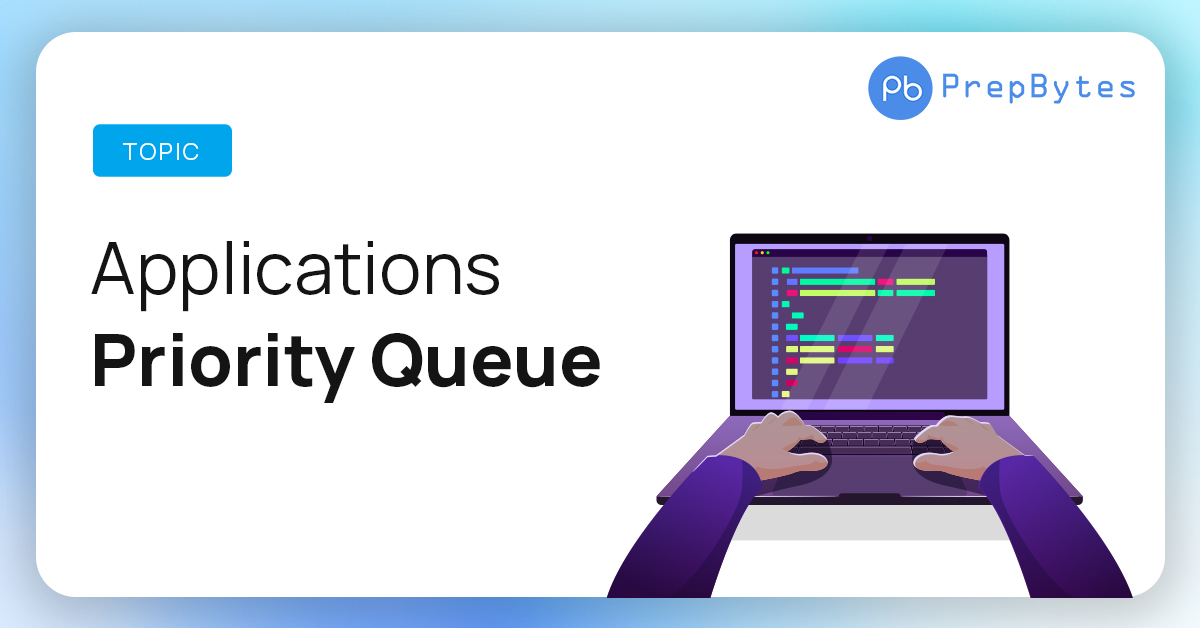A Priority Queue is a special type of queue in which elements present in the queue are served according to their priority i.e. element with the higher priority will be dequeued first before the element with the lower priority and if two elements in the priority queue are have same priority then the element which is enqueued first will be dequeued first.
Applications of Priority Queue
-
Dijkstra’s Algorithm
Dijkstra’s algorithm is a popular graph traversal algorithm used to find the shortest path between two nodes in a graph with non-negative edge weights. It relies on a priority queue to greedily select the vertex with the smallest distance from the source node at each step. The priority queue helps ensure that the algorithm always explores the most promising paths first, resulting in an efficient solution. -
Task Scheduling
Priority queues are widely used in task scheduling problems, where each task has a priority associated with it. The priority queue allows efficient management of tasks based on their priorities, ensuring that higher priority tasks are executed first. This application can be found in operating systems, real-time systems, and job schedulers. -
Huffman Coding
Huffman coding is a popular data compression algorithm used to compress data efficiently. It assigns variable-length codes to different characters based on their frequency of occurrence in the input data. A priority queue is employed to build the Huffman tree, where characters with lower frequencies have higher priorities. This application enables optimal encoding and decoding of data, resulting in significant space savings. -
Event-driven Simulation
In event-driven simulations, a priority queue is used to schedule and process events based on their timestamps. Events with lower timestamps (i.e., events that should occur earlier) have higher priorities in the queue. This approach ensures that events are processed in the correct order, leading to accurate simulations in areas such as computer graphics, network simulations, and game development. -
Load Balancing
Priority queues play a crucial role in load balancing scenarios where multiple servers handle incoming requests. By assigning priorities to the requests based on their characteristics (e.g., resource requirements or user importance), a priority queue can distribute the workload efficiently among the servers. This helps optimize resource utilization and ensures timely processing of high-priority requests. -
Databases and Operating Systems
Priority queues find applications in various aspects of database management systems and operating systems. They are used for query optimization, transaction management, deadlock handling, and process scheduling. Priority queues allow efficient handling of resource allocation, task prioritization, and concurrency control, contributing to the overall performance and reliability of these systems. -
Network Routing
Routing algorithms in computer networks often employ priority queues to determine the next hop for forwarding packets. By assigning priorities based on factors like link cost, congestion level, or quality of service requirements, priority queues facilitate efficient packet routing and traffic management. This helps optimize network performance and ensures timely delivery of critical data.
Conclusion
These are just a few examples of the many applications of priority queues. The versatility of this data structure makes it a powerful tool for solving a wide range of problems in computer science, operations research, and other fields. Efficient implementations of priority queues, such as binary heaps or Fibonacci heaps, are crucial to ensure the scalability and effectiveness of algorithms that rely on this data structure.
In conclusion, priority queues are a fundamental data structure with numerous applications across various domains. Their ability to efficiently manage and process elements based on their priorities makes them invaluable in solving complex problems. Understanding and utilizing priority queues can lead to significant performance improvements and enable the development of more efficient algorithms and systems.
FAQ related to Applications of Priority Queue
Q1: How is a priority queue different from a regular queue?
Ans. A regular queue follows the first-in-first-out (FIFO) principle, where the element that has been in the queue the longest is the first to be removed. In contrast, a priority queue removes elements based on their priority, regardless of their order of insertion.
Q2: What data structures are commonly used to implement priority queues?
Ans. Priority queues can be implemented using various data structures, such as binary heaps, Fibonacci heaps, or self-balancing binary search trees like AVL trees or red-black trees.
Q3: Are priority queues only used for minimizing priorities?
Ans. No, priority queues can be used for both minimizing and maximizing priorities. It depends on the specific application and how priorities are defined.
Q4: Can a priority queue store elements with equal priorities?
Ans. Yes, a priority queue can store elements with equal priorities. The order in which elements with equal priorities are removed may vary depending on the specific implementation.
Q5: Are there any limitations or challenges associated with priority queues?
Ans. One limitation is that updating the priority of an element in a traditional priority queue can be inefficient. Additionally, certain priority queue implementations may have space or time complexity considerations that need to be taken into account depending on the specific use case.



